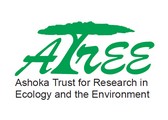Any and all opinions expressed in this newsletter are solely those of the author(s) and do not reflect the opinion of ATREE.
Centre for Excellence in Conservation Science
Royal Enclave,Srirampura,Jakkur Post
Bangalore-560064
Telephone: 080-23635555 (EPABX)
Fax : 080- 23530070
Organisms interact with other organisms in different ways. Sometimes they
compete, predate, get preyed upon, or even act as parasites. Some interactions
between species can also be beneficial to either of them. Several species exerts
selective pressure on the other, so they evolve together. The biodiversity that is
commonly talked about is not number of species but also encompasses such
interactions in nature. Given my formal training in engineering and economics I
cannot help but see various analogies in those of the socio-economic order.
Various ethnicity and groups combine to form nations, orders and unions to
avoid being conquered which maybe an equivalent of intra and inter-specific
interactions to avoid being predated. Also, resource driven conflicts has
improved human civilization, akin to niche-based competition aiding evolution
and natural selection. Any change in one component has serious implications
for the other. In the natural world one can see many species that have coevolved.
A reduction in seed dispersers like bats can influence the survival of
Elaeocarpus tuberculatus in the long run. Thus, survival of one species is
heavily dependent on another. Studies on such plant animal interaction are
important not just to push the boundaries of knowledge but also to aid in
conservation. For example, the understanding of interactions have driven a
policy shift whereby foci of conservation shifted from species to ecosystems viz.
PA and recent declaration of the entire Western Ghats across five states as a
Heritage Site. Such policy level decisions not just aid in the conservation of one,
but many species.
Many ecologists have studied plant-animal interactions in KMTR. This issue's
special focus is on such observations in KMTR. Apart from the casual
observations during field visits and a research article, there is an interesting
article from a Ph.D. studentís experience in the forest. A report on the annual
festival inside KMTR marks the gradual shifting of roles and responsibilities to
local stakeholders which began last year. The voluntary reduction in polythene
bags brought inside the forest maybe a sign that ATREE's efforts in the
landscape are paying off.
Editorial Team
Editor: Allwin Jesudasan
Associate editor: Rajkamal Goswami
Editorial Review: R. Ganesan, M. Soubadra Devy, T. Ganesh
Design and presentation: Kiran Salagame
A S H O K A T R U S T F O R R E S E A R C H I N E C O L O G Y A N D T H E E
N V I R O N M E N T
Notes from the editor:
Conserving in pairs
- Allwin Jesudasan
If you have any suggestions or comments please let us know through the boxes below





